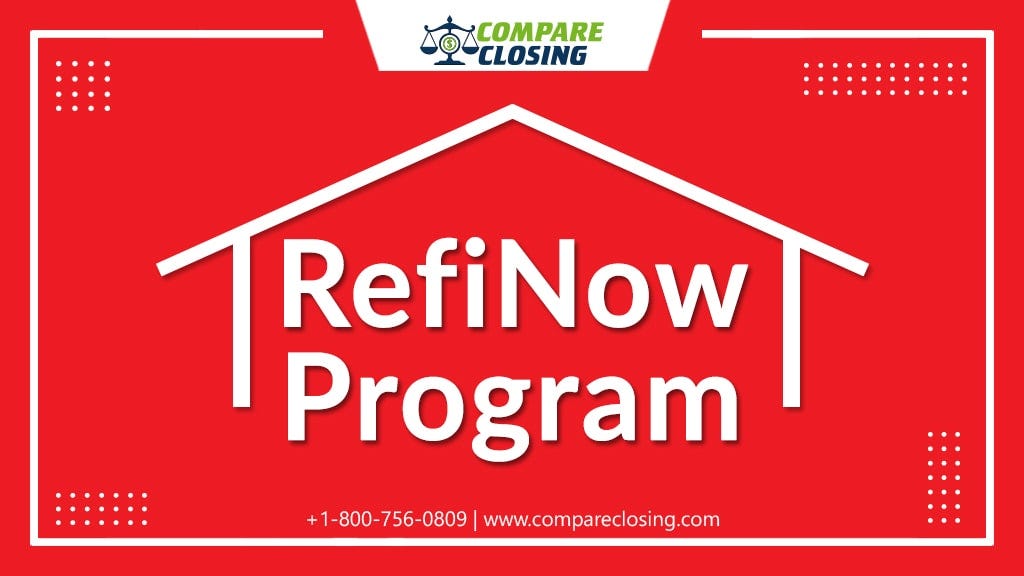
About RefiNow Program
Homeowners who want an affordable refinancing option to refinance easily, be less expensive, and reduce their monthly housing costs use the option of refinow.
On October 20, 2021, certain changes were made to expand the terms of RefiNow.
RefiNow is available to borrowers who are at or below 80% of the area median income and have debt-to-income (DTI) ratios of up to 65%, Some of the barriers to refinance is addressed by RefiNow and offer features that are a good option for creditworthy borrowers who could not qualify previously.
Low-income borrowers are provided with financing options through this new refinance program to build equity and increase their wealth.
The program promotes a stronger, and more stable housing finance system by extending eligibility to those borrowers who may not have had the funds available to refinance previously.
With RefiNow borrowers can take advantage of the current low-interest rates that are available in today’s market.
Earlier borrowers used their money for making high mortgage payments now they can save the money and put it towards their future.
Now they can get their home improvement projects done by saving their monthly expenses that would have gone towards the mortgage.
And as a result, increase the value of their home.
How To Qualify For RefiNow?
If homeowners want to qualify for the refinance option, they must have:
- A mortgage that is owned by Fannie Mae and is secured by a 1-unit principal residence;
- The current income should be 80% or below the area median income;
- In the past six months, the homeowner should have no missed payments on their current mortgage loan and any missed payment in the past 12 months should not exceed once
- They must have a mortgage where the loan-to-value ratio should be up to 97%, the debt-to-income ratio must be 65% or less, and they should have a minimum credit score of 620.
The Benefits Of RefiNow
According to the RefiNow program, the refinanced loan must provide the following benefits to the borrower:
Along with saving money and growing wealth borrowers can expect a minimum reduction of 50- basis points in interest rates and they can save up to $50 on their monthly payments with RefiNow.
This is inclusive of principal, interest, and insurance. Borrowers can receive a maximum credit of $500 from the lender if an appraisal is required. Borrowers can save money monthly with the help of RefiNow.
Low-income borrowers could have saved on the 50-basis point up-front adverse market refinancing fee waiver if their loan is or below $300,000.
This fee alone could have gone to $1,000 or more, depending on the mortgage amount.
With the current historically low-interest rates, large fees waiver can provide low-income borrowers with a way to save money after purchasing a home.
Requirement Of Documentation For RefiNow
- If it is a non-variable base pay: The borrower needs to submit their year-to-date paystub which is 30 days prior to the loan application date.
- If it is a variable base pay like tip, overtime, bonus, or income commission income: The borrower needs to submit their year-to-date paystub and W2 covering the most recent twelve-month period.
- If the borrower is self-employed: unless the terms to waive business tax returns they need to provide one year of personal and business tax returns.
- For other waivers: court order or equivalent documentation, copy of divorce decree, separation agreement, and one-month documentation of receipt
More About RefiNow
The RefiNow option can be used only one time. At present, there is no expiration date for this refinance option.
When using the RefiNow option borrowers can not club it with other negotiated terms like variances, exceptions, or special requirements which may impact the underwriting or eligibility without the prior approval from Fannie Mae.
Conclusion
For millions of homeowners across the U.S., the cost to refinance is unattainable so the Federal Housing Finance Agency (FHFA), with the help of RefiNow the Federal Housing Finance Agency (FHFA), has made home refinancing accessible for lower-income households.
RefiNow promotes a housing finance system that is stronger and safer.
https://www.compareclosing.com/blog/all-about-refinow-program/
Comments
Post a Comment